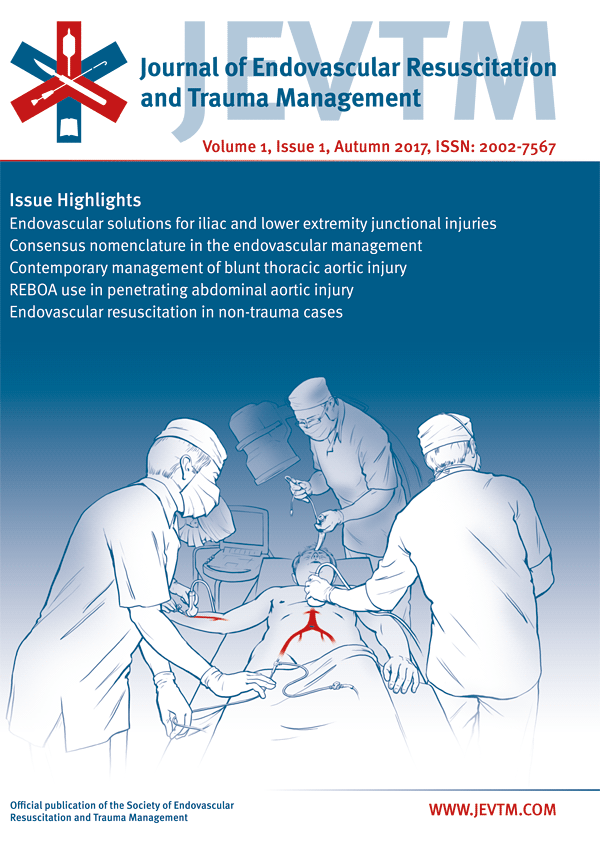Contemporary Management of Blunt Thoracic Aortic Injury: Results of an EAST, AAST and SVS survey by the Aortic Trauma Foundation
DOI:
https://doi.org/10.26676/jevtm.v1i1.8Keywords:
Trauma, Blunt Thoracic Aortic Injury, BTAI, Endovascular, Practice PatternsAbstract
Objective: To determine contemporary management practices for blunt thoracic aortic injury (BTAI) among trauma and vascular surgeons.
Methods: A survey of Eastern Association for the Surgery of Trauma, American Association for the Surgery of Trauma and Society of Vascular Surgeons (SVS) membership regarding BTAI care was conducted.
Results: 404 respondents included trauma (52.5%), vascular (42.6%) and other specialty providers (4.5%) primarily from North American (90.6%) academic teaching institutions (71.0%) / American College of Surgeons Level I trauma centers (58.9%). Most respondents managed one to fi ve BTAIs annually (71.6%). Preferred diagnostic modality was computed tomographic angiography (CTA) (99.8%), after which respondents stated they preferred to utilize personal knowledge of the literature and experience (50.5%), the SVS guidelines (27.4%) or institution specifi c guidelines (12.8%) to guide subsequent management. Respondents primarily agreed on the treatment of intimal tears (SVS G1) with medical management. For intramural hematoma (SVS G2), management choice was divided between medical 46.6%) and thoracic endovascular aortic repair (TEVAR) (46.3%). Both groups defi ned TEVAR as treatment of choice for hemodynamically stable patients with pseudoaneurysm (SVS G3) (93.5%) and rupture (SVS G4) (82.2%), although a greater number of trauma surgeons preferred open repair (20.4%) than vascular counterparts (4.1%) in stable G4 patients. Preferred medical management goals varied between mean arterial pressure (37.3%) and systolic blood pressure (62.3%) targets. Preferences also varied in adjuncts for open repair (left heart bypass 56.5%; clamp and sew 46.1%; cerebrospinal fl uid (CSF) drainage 48.5%) and TEVAR (percutaneous puncture for arterial access 58.4%; open vascular exposure 65.5%, intravascular ultrasound 36.1%, CSF drainage 28.9%). Outpatient follow-up timing (2 weeks 37.0%, 1 month 37.2%) and initial type (clinical exam 36.6%, CTA 48.3%) also varied.
Conclusions: The survey of trauma and vascular surgeons illustrates controversy regarding SVS G2 treatment, surgical adjuncts and follow-up. Additional study is required to identify optimal BTAI management.
Published
How to Cite
Issue
Section
License
Copyright (c) 2017 Journal of Endovascular Resuscitation and Trauma Management

This work is licensed under a Creative Commons Attribution 4.0 International License.
Authors of content published in the JEVTM retain the copyright to their works.
Articles in the JEVTM are published under the terms of a Creative Commons CC BY 4.0 license, which permits use, downloading, distribution, linking to and reproduction in any medium, provided the original work is properly cited.




